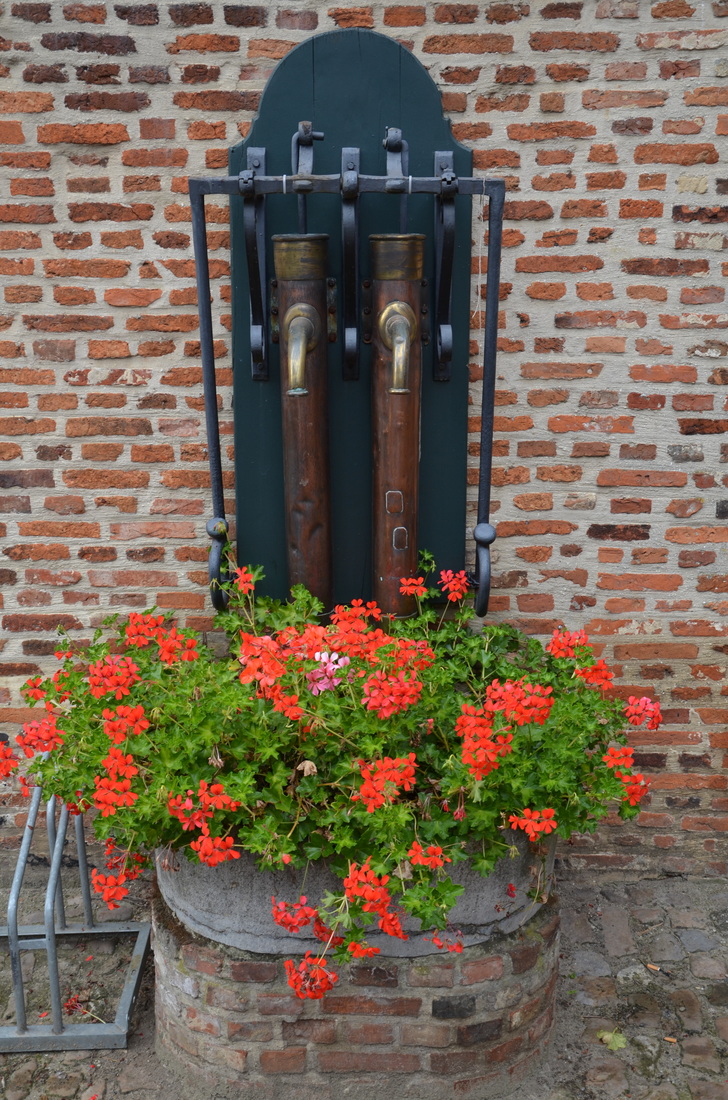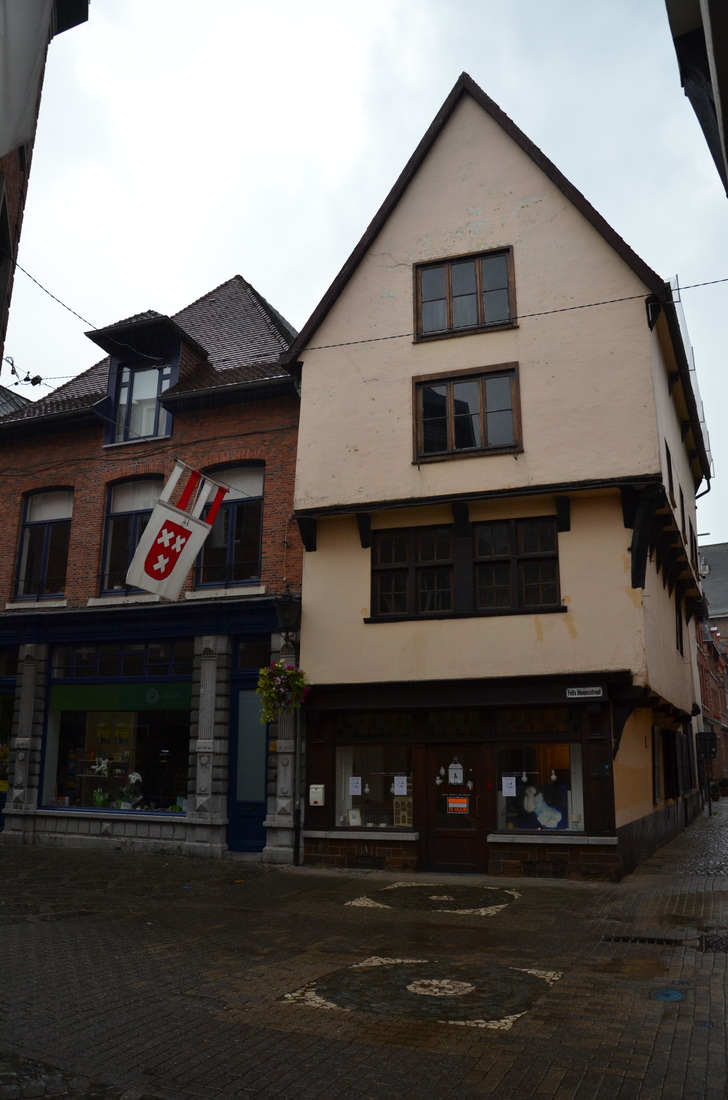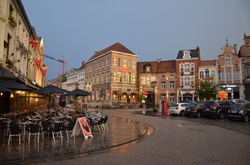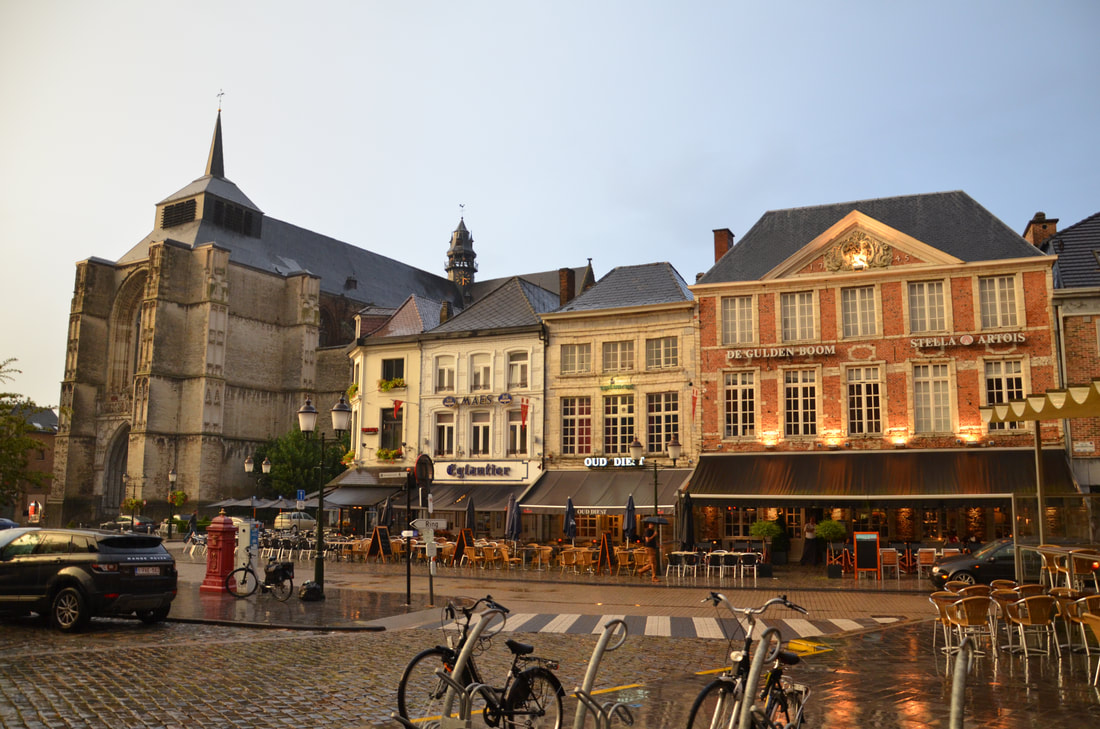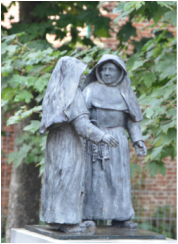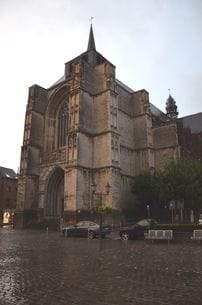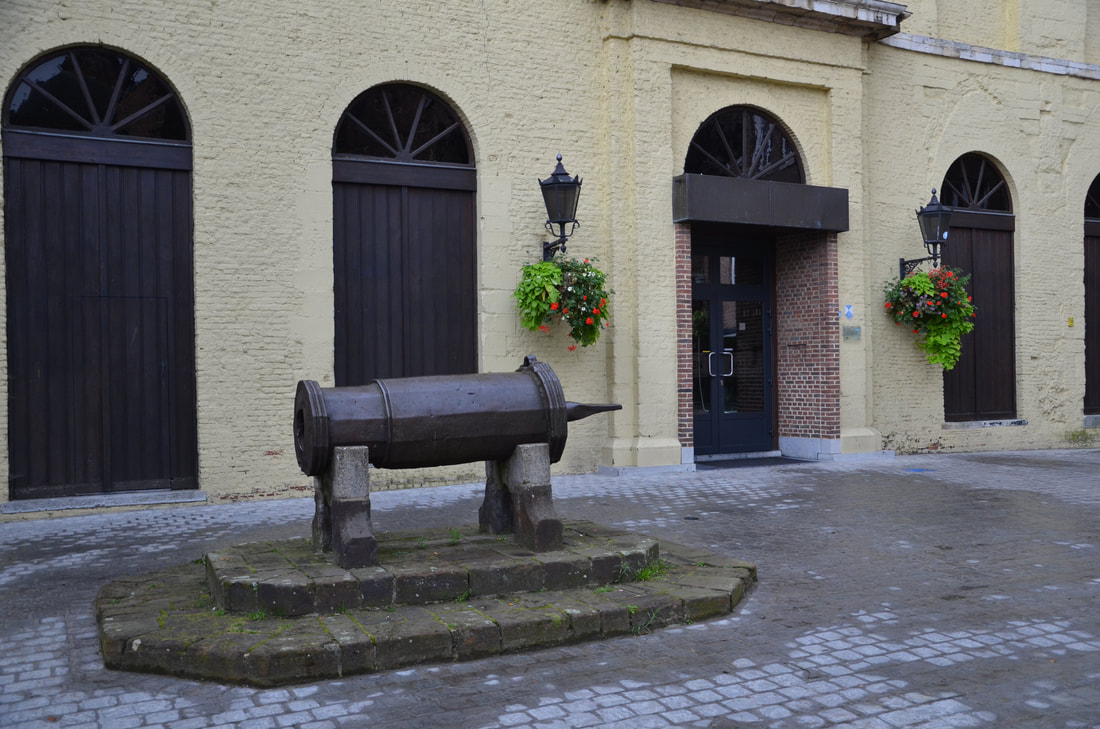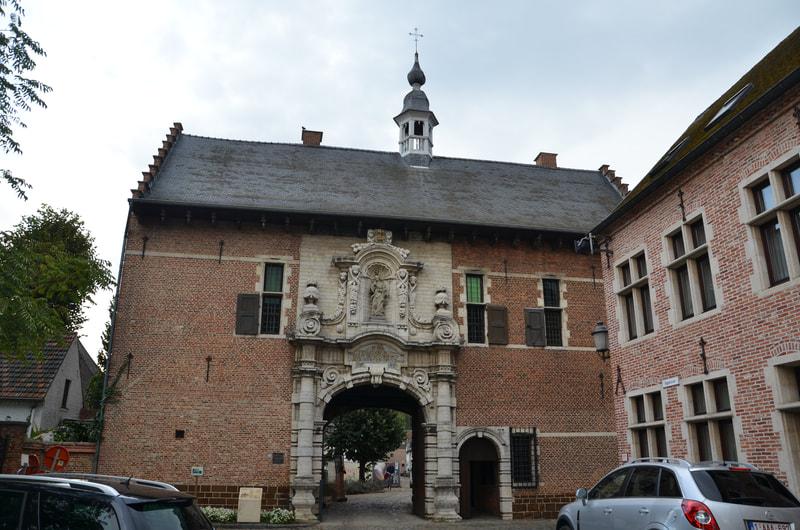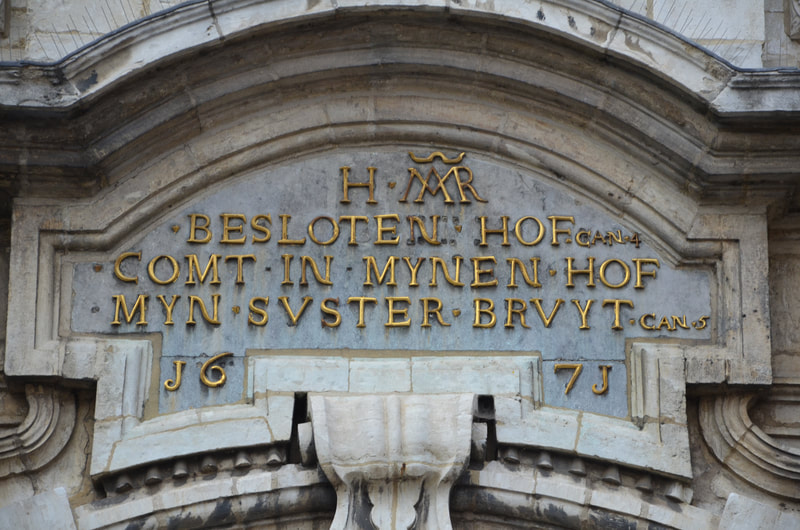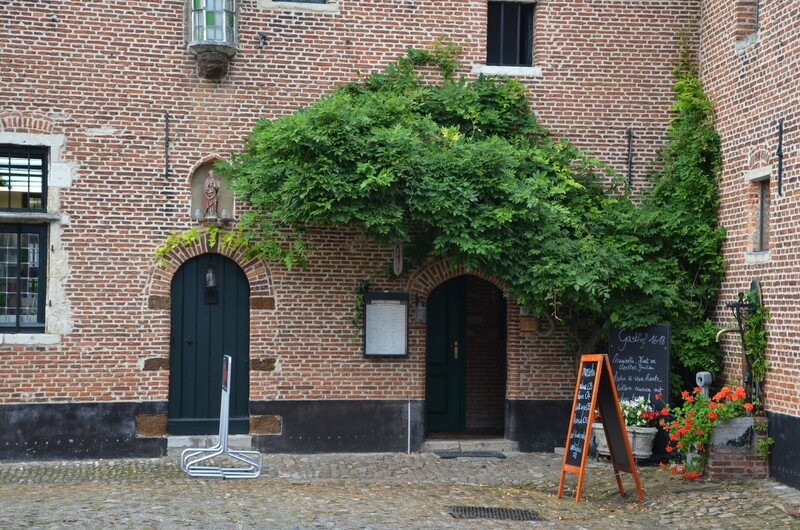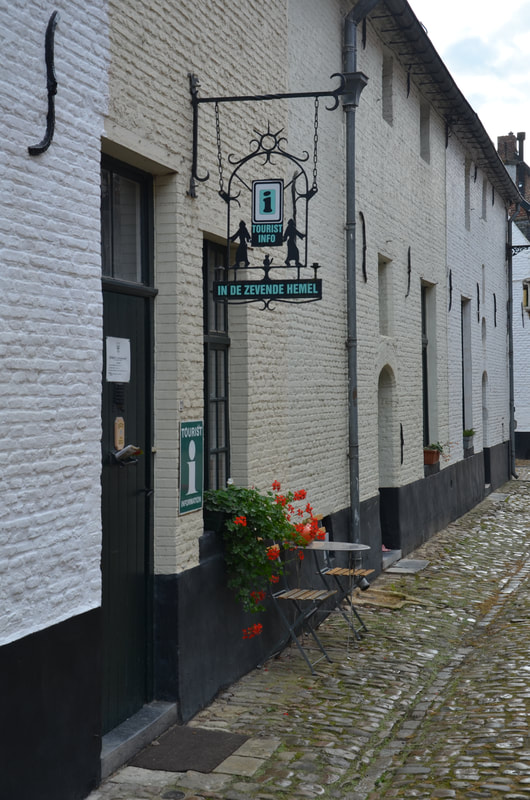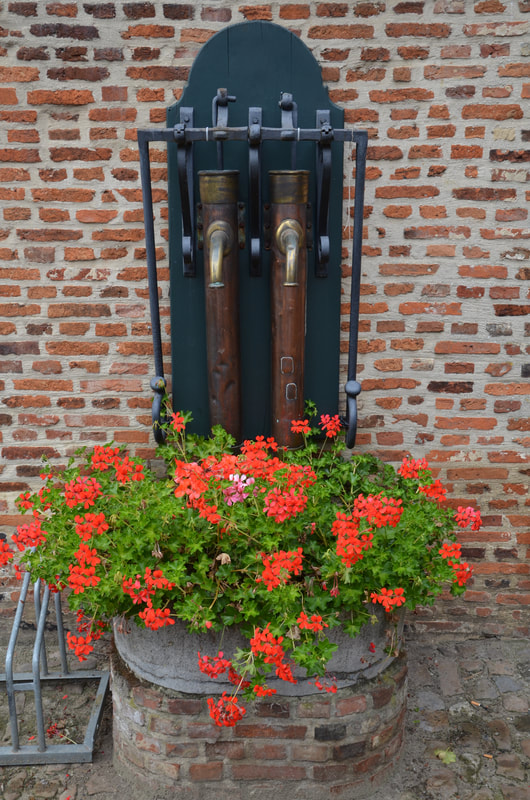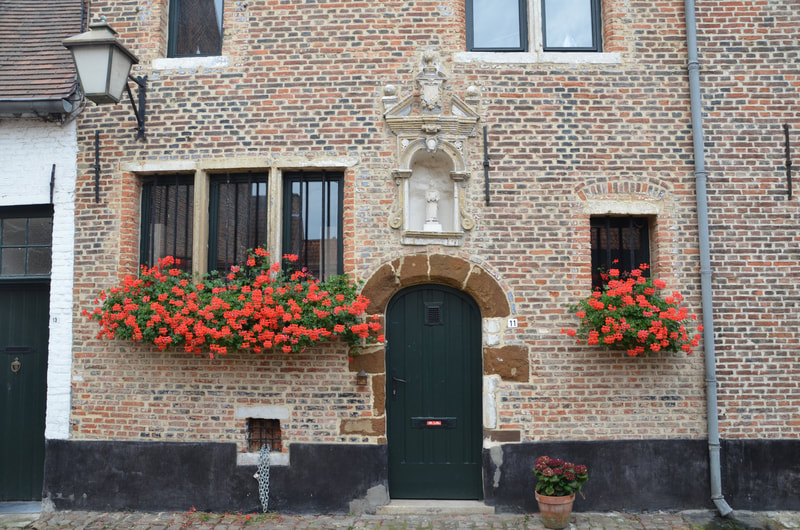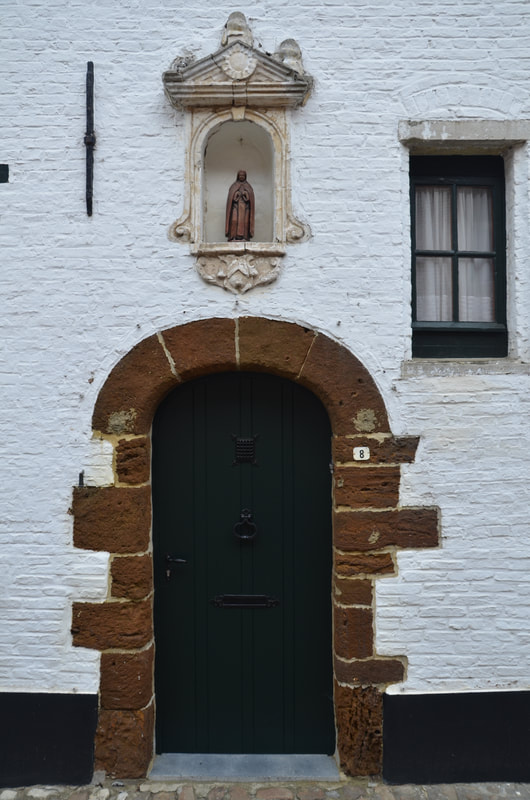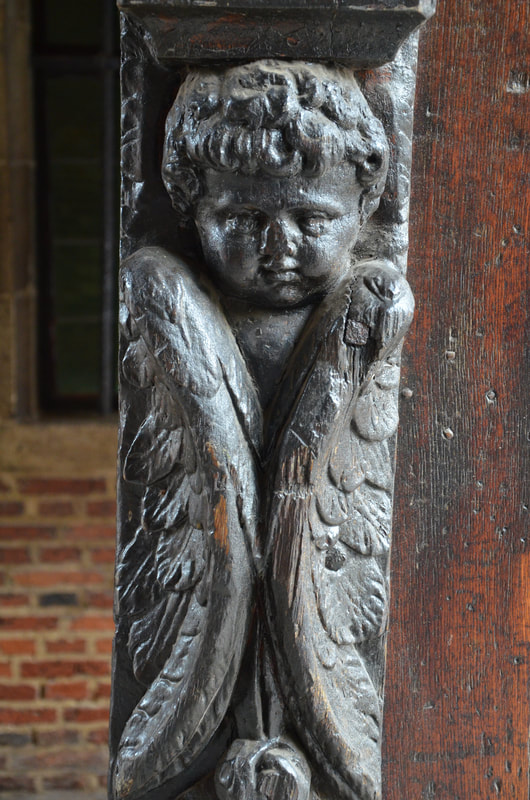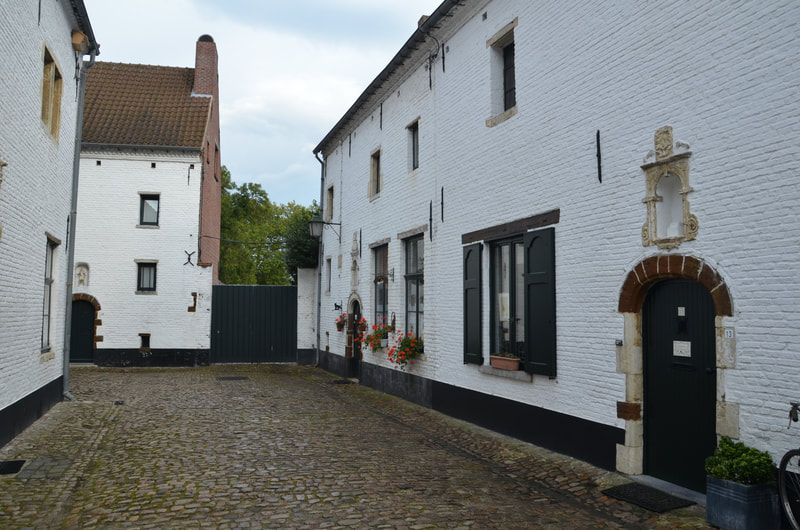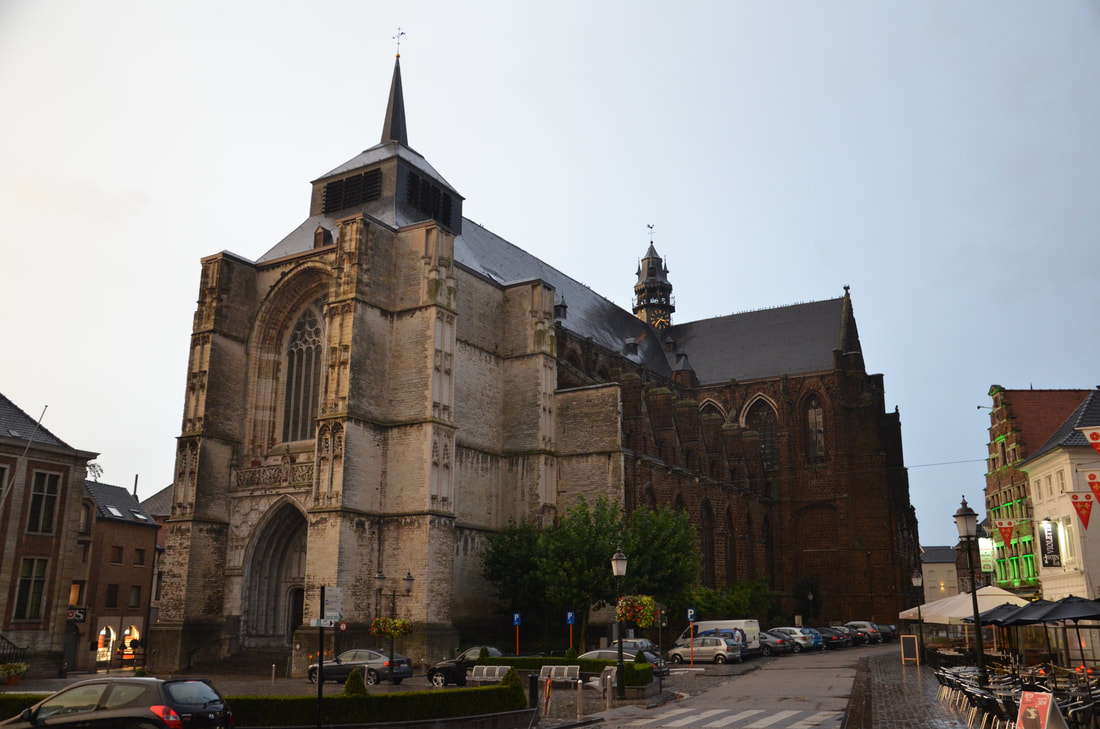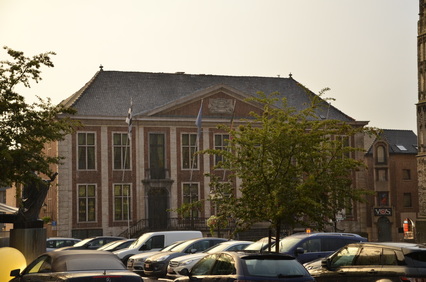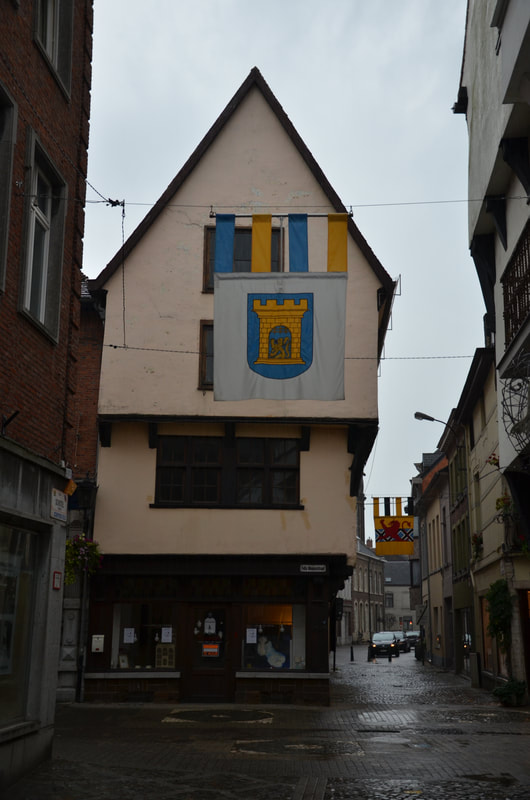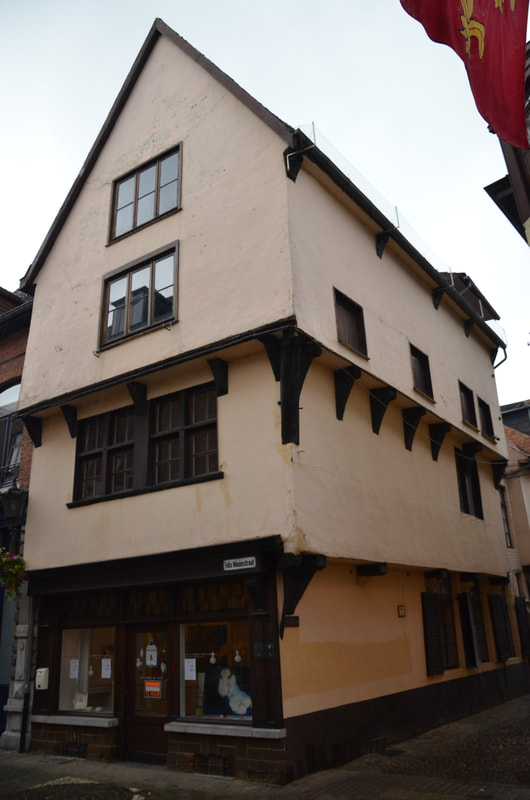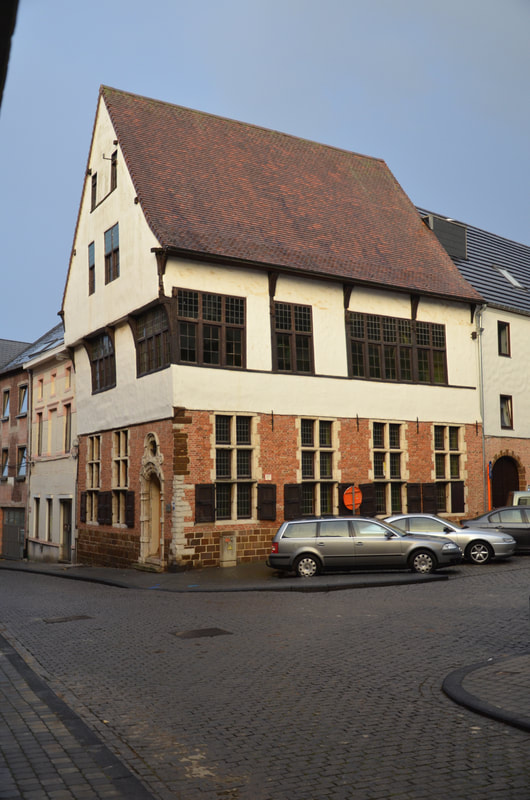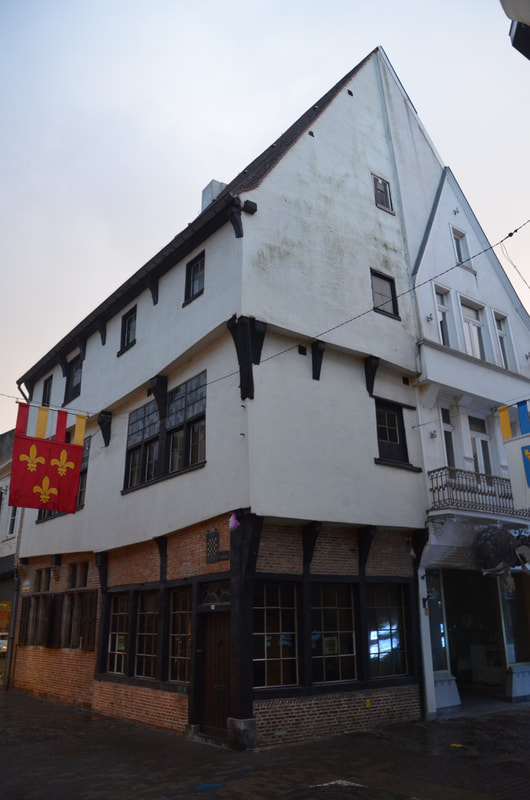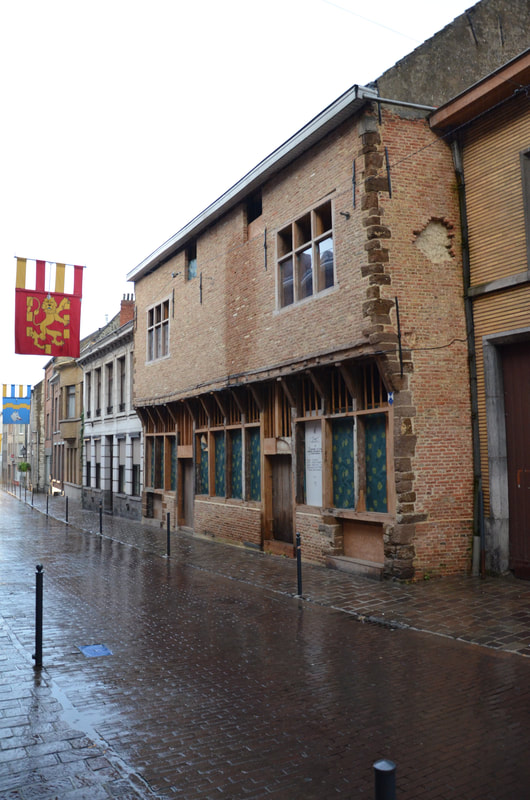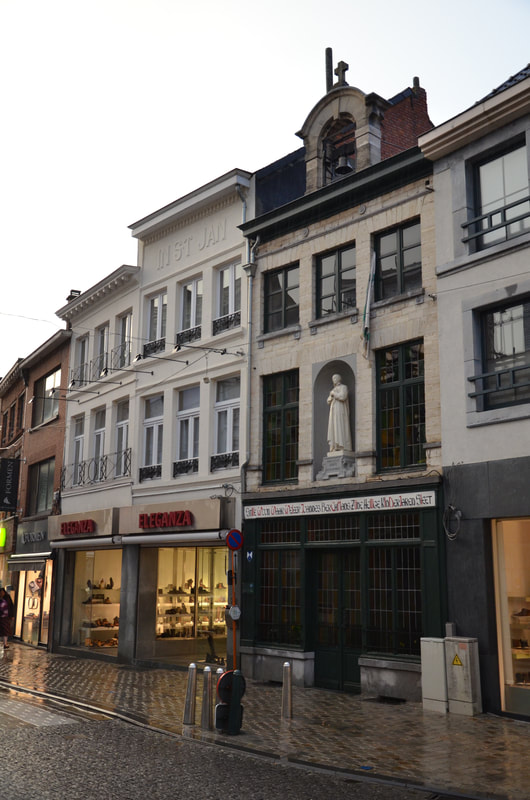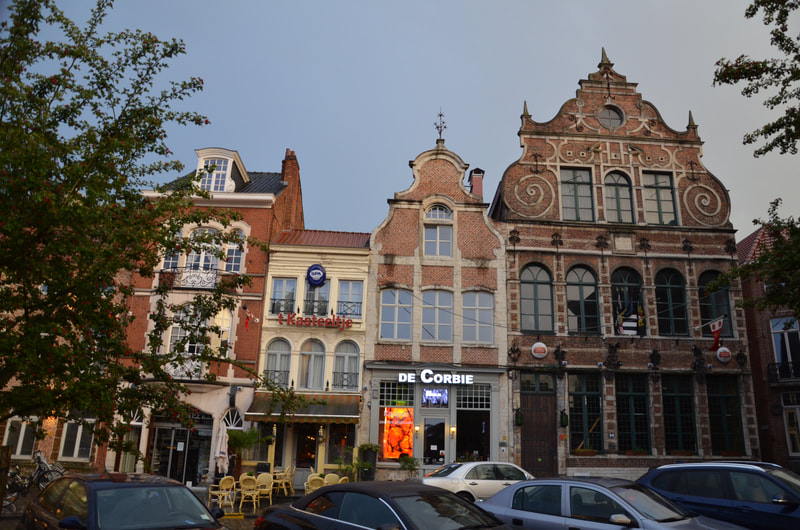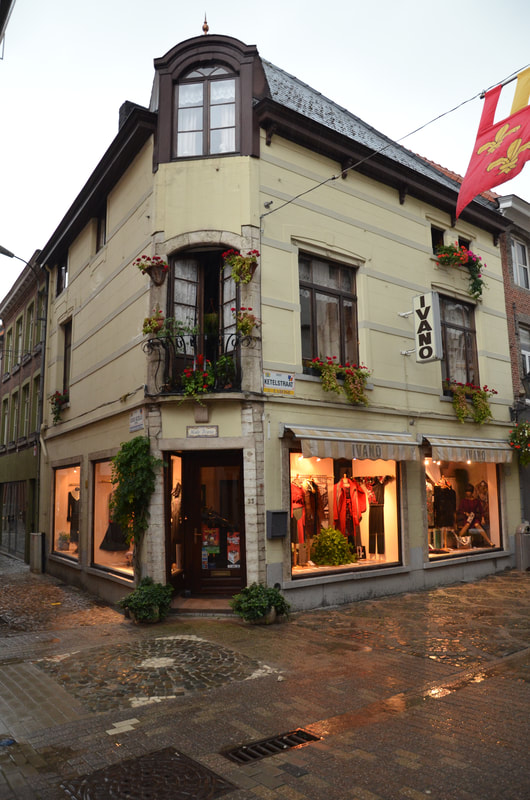Diest
It is a small town in the northeast of Belgium, on the River Demer, 30 kilometers from Leuven. What distinguishes them from other small Belgian cities is its rich history and one of the largest Beginaż in the country, inscribed on the UNESCO World Heritage List. Prince Filip, the eldest son of William the Silent, is also buried in this former capital of the Duchy of Brabant.
Beginaż św. Katarzyny (St. Katharinabegijnhof) to bez wątpienia jeden z najciekawszych zabytków w Diest. Znajduje się on około 10 minut drogi na północny wschód od Grote Markt. Beginaż został wpisany na listę Światowego Dziedzictwa UNESCO. Główne wejście, przez wspaniały barokowy portal, znajduje się u wylotu Begijnenstraat. Pod portalem widnieje napis Wejdź do mego ogrodu, siostro ma i oblubienico. Cytat ten jest nawiązaniem do biblijnej Pieśni nad Pieśniami.
The exact date of the founding of the Beguinage is unknown, therefore the year 1245 is assumed as the beginning of existence, when the Pope Inocent IV in the issued document provided special protection for the Beguines and the Beguinage of Diest. The first mention of Beguines was that they lived outside the walls of Diest. They leased a piece of land from the abbey of St. Gertrude. The abbey agreed to build a church and houses. In the second half of the fourteenth century, Diest expanded, that's why the Beguinage was included in the city.
Beguinage in Diest was inhabited by both rich and poor Beguines. When the rich Beguine wanted to build her own house in the Beguinage, she had to ask for the consent of the mistresses and the pastor. After the house was built, she could live in it until her death. She also had the right to indicate three Beguines, who after her death will live in this house. After their death, the house became the property of the congregation.
Beguinage in Diest was inhabited by both rich and poor Beguines. When the rich Beguine wanted to build her own house in the Beguinage, she had to ask for the consent of the mistresses and the pastor. After the house was built, she could live in it until her death. She also had the right to indicate three Beguines, who after her death will live in this house. After their death, the house became the property of the congregation.
Beginaż was managed simultaneously by at least 4 postponed beguines (mistress). They were chosen by beguines living in Beginaż for at least 10 years. Beginaż also had a pastor, approved by Lord Diest. Financial matters were supervised by a secular administrator, assessed annually by beguines superior (mistress) and a pastor.
The greatest development Beginaż in Diest falls on the 17th century. It was then that beguines began to rebuild clay and wooden houses into brick. About 1665 in Beginaż there were about 100 houses, 1/3 of them were built of bricks. Beguines also invested in decorating the church with new works of art, as well as in the construction of a new entrance gate to the Beguinage, finally put into use in 1671.
New beguines had to go through a one-year trial period, during which they vowed obedience and chastity. After this one-year trial, they were able to settle in Beginaż, by buying a house or renting a room from a rich beguine.
The main occupation of beguines was the textile industry. They also dealt with the basic education of children. On the premises Beginaż had their own farm that met their nutritional needs.
The greatest development Beginaż in Diest falls on the 17th century. It was then that beguines began to rebuild clay and wooden houses into brick. About 1665 in Beginaż there were about 100 houses, 1/3 of them were built of bricks. Beguines also invested in decorating the church with new works of art, as well as in the construction of a new entrance gate to the Beguinage, finally put into use in 1671.
New beguines had to go through a one-year trial period, during which they vowed obedience and chastity. After this one-year trial, they were able to settle in Beginaż, by buying a house or renting a room from a rich beguine.
The main occupation of beguines was the textile industry. They also dealt with the basic education of children. On the premises Beginaż had their own farm that met their nutritional needs.
Today, Beguinage in Diest is inhabited by ordinary residents. What distinguishes it from other Beguinages is that there are artistic studios, a restaurant, a cafe and even a tourist information office. Beguinage is open all year.
The next attractions that are worth seeing are located 10 minutes away from the Beguinage, on an unusual, irregular Grote Markt. We find here many charming 17th-18th century tenement houses, city hall (stadhuis), and above all, the church of St. Sulpice (St. Sulpitiuskerk).
|
Church of St. Sulpice |
vertical divider
is a gothic church built of brown stone from Hagman's hills. It was designed by the French architect Pierre De Savoye. Construction lasted for over 200 years, from 1321 to 1534 year. He replaced the former Romanesque church. Over the centuries, the construction was supervised by 18 different architects.
|
Na jednej z wież kościoła, zwanej musztardową, znajduje się karylion, składający się z 47 dzwonów. Wygrywa on melodie co 15 minut, od godziny 9 do 21. We wnętrzu kościoła znajduje się wiele skarbów z różnych epok. Możemy tutaj podziwiać późnogotycki krzyż triumfalny nad wejściem chóru, tabernakulum renesansowe, czy barokową ambonę i chrzcielnicę, która została wykorzystana podczas chrzcin przyszłego świętego Jana Berchmansa.
|
Warto zwrócić też uwagę na ciekawe rzeźbione stalle chóru. Kościół jest również miejscem spoczynku Filipa Wilhelma Oranje-Nassau (1554-1618), najstarszego syna Wilhelma Orańskiego i jego pierwszej żony Anny Egmond, hrabiny Buren. Jego zabalsamowane ciało pochowane jest w ołowianej trumnie, w krypcie pod prezbiterium.
U stóp grobowca znajduje się mały pojemnik, w kształcie beczki, zawierający serce oraz organy księcia Orange. W latach sześćdziesiątych ubiegłego wieku zainstalowano nową, marmurową tablicę nagrobną z herbem księcia w otoczeniu czterech herbów miast Orange: Bredy (Holandia), Diest (Belgia), Dillenburga (Niemcy) i Orange (Francja). |
Na nowej płycie, którą wmurowano w 1965 roku, znajduje się sentencja po łacinie:
Do Boga, najwyższego i największego, tutaj jest pogrzebany znakomity książę Filip-William, książę Orange, hrabia Nassau, zmarły w Brukseli 20 lutego 1618 roku. Niech spoczywa w pokoju.
W kościele znajduje się stała ekspozycja Muzeum Sztuki Sakralnej (Muzeum voor Religieuze Kunst), której głównym skarbem jest monstrancja wysadzana 220 diamentami.
Do Boga, najwyższego i największego, tutaj jest pogrzebany znakomity książę Filip-William, książę Orange, hrabia Nassau, zmarły w Brukseli 20 lutego 1618 roku. Niech spoczywa w pokoju.
W kościele znajduje się stała ekspozycja Muzeum Sztuki Sakralnej (Muzeum voor Religieuze Kunst), której głównym skarbem jest monstrancja wysadzana 220 diamentami.
Ratusz miejski (Stadhuis) został wybudowany w latach 1726-1731 według planów Williama Ingnatius Kerricx. Do budowy wykorzystano cegłę oraz biały marmur. Całość budynku wieńczy na dużym frontonie herb Diest. W 1948 roku wybudowano nową platformę oraz piękne schody. W zabytkowych piwnicach mieści się muzeum miejskie Hofstadt.
|
Muzeum miejskie Hofstadt Muzeum prezentuje wspaniałą kolekcję sztuki, która odzwierciedla bogatą historię miasta Diest. Perłą kolekcji jest obraz Zwiastowanie pędzla jednego z największych malarzy szkoły w Utrechcie, Hendrika ter Brugghena, oraz dwa znakomite XVII-wieczne dzieła Horti Conclusi-dzieło będące połączeniem malarstwa, rzeźby i papieru-stworzone w Mechelen. Znajdziemy tu również liczne rzeźby, obrazy, srebra. |
Podczas spaceru ulicami Diest warto zawitać na ulicę Felix Moonsstraat 1. Mieści się tutaj bardzo interesujący XVI-wieczny dom narożny, składający się z trzech zwisających kondygnacji. Drewniany szkielet domu pokryto glinianym tynkiem. W domu tym możemy zauważyć zewnętrzne wsporniki pomiędzy kondygnacjami. W roku 1591 mieszkał tu Prezydent Adrian Vanden Hove, dziadek Świętego Jana Berchmans. Popularna nazwa tego domu to Gemettel. Od 1943 roku dom wpisany jest na listę chronionych zabytków.
De Roskam-przy ulicy Allerheiligenberg 16 znajdziemy następny piękny dom z XVI wieku. Podobnie jak dom z ulicy Felix Moonsstraat 1 zbudowano go z drewna i gliny. Mamy tutaj jednak podstawę z cegły. Jest to budynek dwukondygnacyjny o stromym dwuspadowym dachu. W domu znajduje się piękne łukowe, barokowe wejście wykonane z piaskowca. Nad nim znajduje się owalne okno. Kamienica powstała w 1705 roku.
De Keyzer przy Grote Markt 24 obecnie mieści kawiarnię Leffe. Budynek ten został zbudowany pierwotnie dla cechu łuczników św. Sebastiana w 1616 roku.
De Gulden Maene przy ulicy Sint-Jan Berchmansstraat 24 to dom, w którym, 15 marca 1599 roku, urodził się święty Jan Berchmans, patron studentów. Zmarł w wieku 22 lat w Rzymie. W 1888 roku został kanonizowany. Dom można zwiedzać za darmo, codziennie od 9 do 19.

